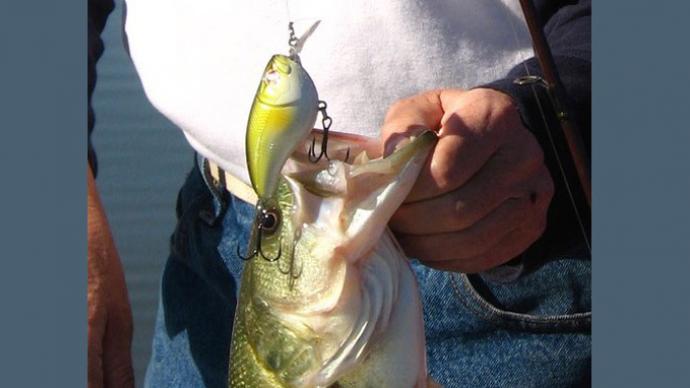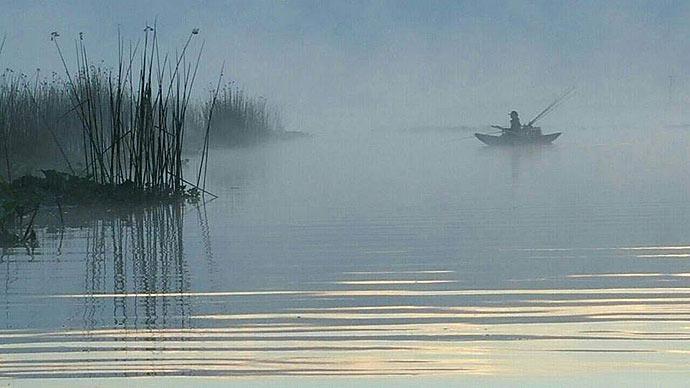
I had one of those "Palm to forehead" moments as this magazine issue came together. I often preach about how to use the different species of fish and how each one has its own role in your fish community.
Then, I explain to people how these individual species interact in a dynamic underwater community. But teaching about those individual fish and their lifestyle habits has yet to be something with any degree of focus on these pages. So, for the following few issues, this column will drill into the different fish species and how they live in our waters. We'll talk about how they spawn, what they eat, where they live, and how they behave and gain a better understanding of their impact on our waters.
Fathead minnows. Pimephales promelas.
We've written about fathead minnows before, but a refresher course is a good idea.
These little creatures are a vital component in pond management. They have two primary jobs. Job One is to be introduced into new or newly renovated lakes to jumpstart the food chain before stocking game fish. Their second role is to provide a mainstay food source in catfish-only ponds.
Fathead minnows are widely distributed around the nation but are native from Canada to Mexico, mainly along the Rocky Mountains and points east. They were brought to Arkansas as a possible aquaculture species for bait several decades ago and earned the nickname "tuffies" because of their hardiness.
They don't grow large, can't move fast, have a short lifespan, and reproduce prolifically. Fathead minnows go at it when water temps hit the low sixties, sticking their eggs on the underneath side of firm objects in reasonably shallow water. Spawning males turn darker, typically an olive color, with wide bands around their heads. Little fatty bumps, called tubercles, form on their heads. They'll use those little knobs to clean out a spot for a nest.

Different females lay eggs in each nest, and the daddy stays with them even after they hatch. When they hatch, more eggs have been laid, and he holds down the fort, sometimes for as long as 40-50 days. But it's also common for another male to run off the lingerer, especially if Daddy One is growing weary from not eating.
They'll spawn all season long until the water temperature drops out of their range. During their ongoing spawning season, thousands of babies are hatched, and those babies start having babies when little ones are close to 90 days old. So a few pounds of fathead minnows can turn into hundreds of pounds of fathead minnows over six to nine months.
Since they don't grow large (the biggest one I've seen might push 3.5 inches), are tubular shaped, and slow, they are the perfect food for newly stocked bass fingerlings.
Don't expect them to survive longer than 18 months in a new bass lake. That's about it. They can't compete. The little scooters live in the same fundamental niche as most other pond fish. You might say that's a mild disadvantage.
What do they eat, you might ask? They sift through the mud, eating whatever is available. They're like a teenage boy; they like meat, but if cereal is it, they'll eat that. Fatheads eat plants, crustaceans, bugs, plankton...whatever they can get. That's one reason we like fertile ponds, especially during the spring months.

As a fisheries biologist, one of my pet peeves is hearing people tell me they buy fathead minnows to feed hungry bass. It bothers me on two levels. First, the pondmeister needs to know there's not a snowball's chance fatheads will survive in an existing bass lake to re-establish. That means what is bought is what gets eaten. At $10.00 per pound, that's not a smart way to spend some of your disposable income. Heavy on the word "disposable." Since game fish convert baitfish around ten to one, you spend $100 to have a game fish gain a pound. It's smarter to buy something that stands a chance or buy good fish food to feed your baitfish. Second, the vendor that sells the fish should be the first to suggest not buying them...but that's now how the game tends to work.
If you have a catfish pond to grow some meat for the table, by all means, add some fathead minnows. They're a good addition and likely to persevere as a population for a few years.
As with most all recreational pond fish, be sure you have the elements for that species. Fatheads need spawning substrate.
If they don't have that, you restrict their reproduction. Be sure they have food. That means fertile water. They'll readily come to fish food as long as the other fish leave them alone.
Oh, I almost forgot...there's another cool factoid about fathead minnows. When attacked, they give off a chemical that all fatheads can sense. That triggers a "flee" response, and they scatter. And whatever fish ate, that minnow carries that chemical and other fatheads can sense it.
But to no avail. Fathead minnows in your pond are the martyrs that give your game fish a first boost. That makes fathead minnows very important.
Reprinted with permission from Pond Boss Magazine



